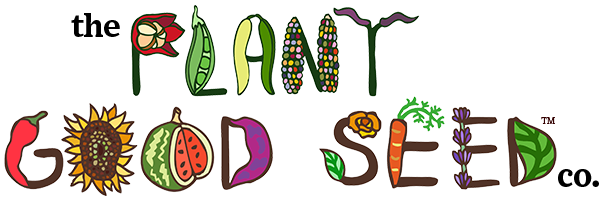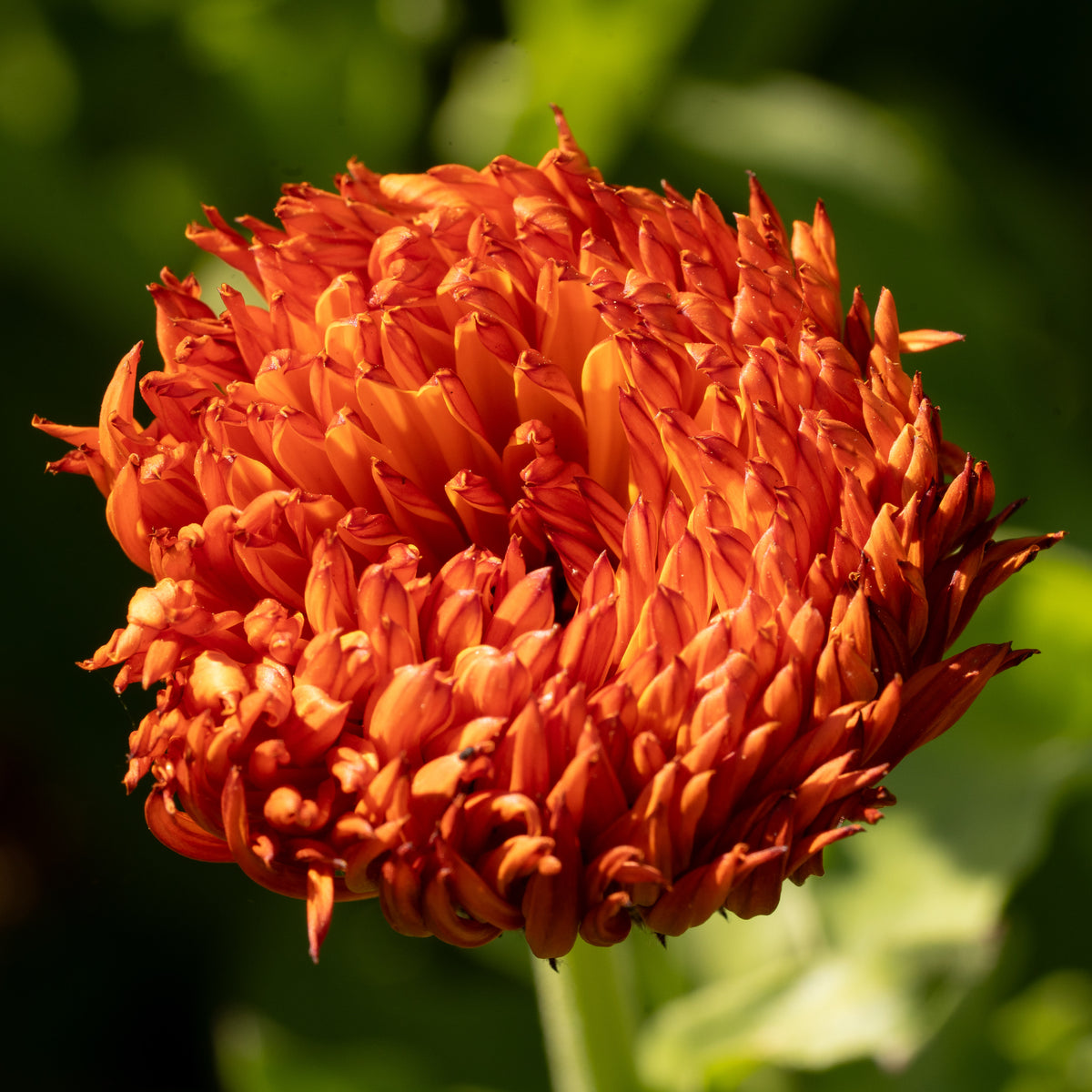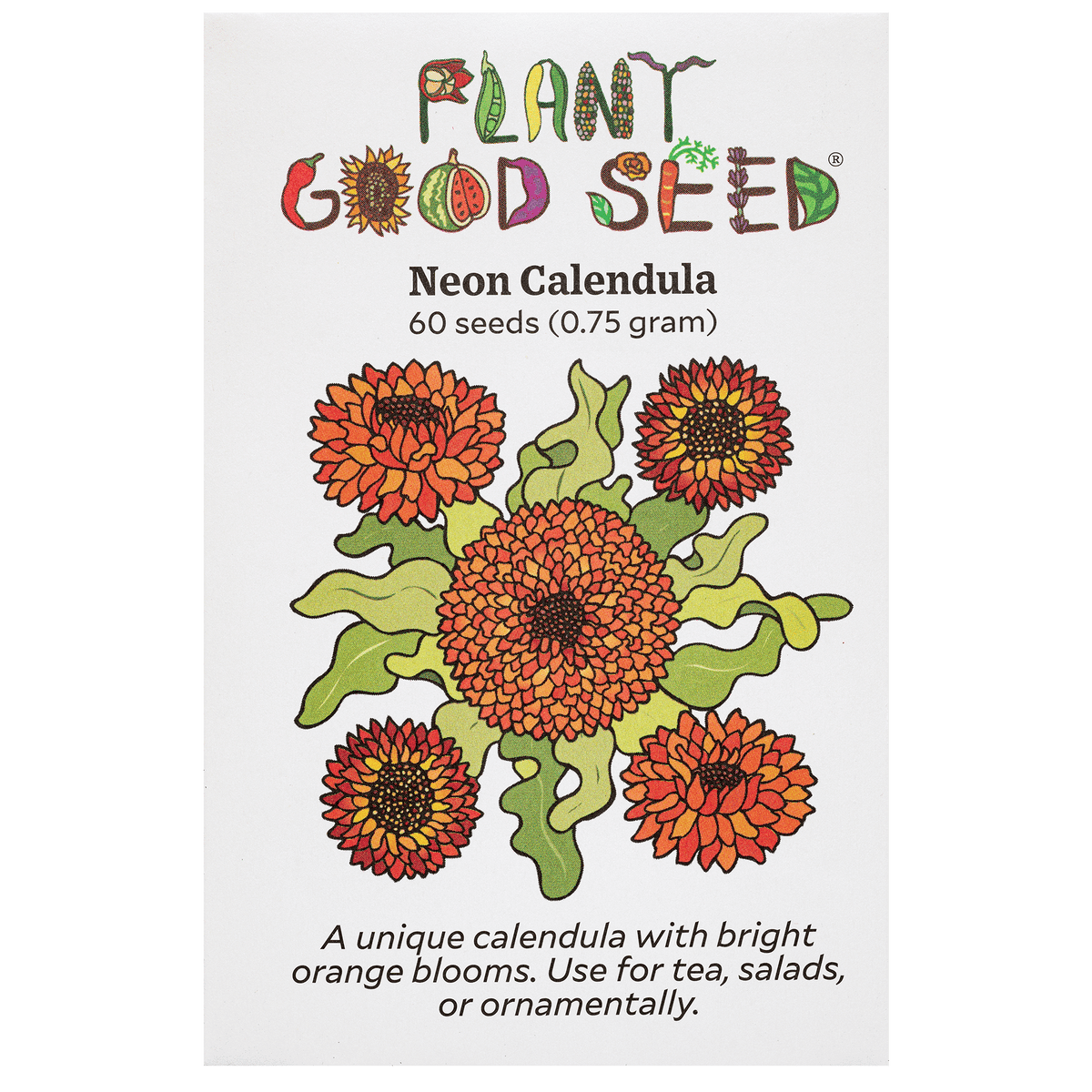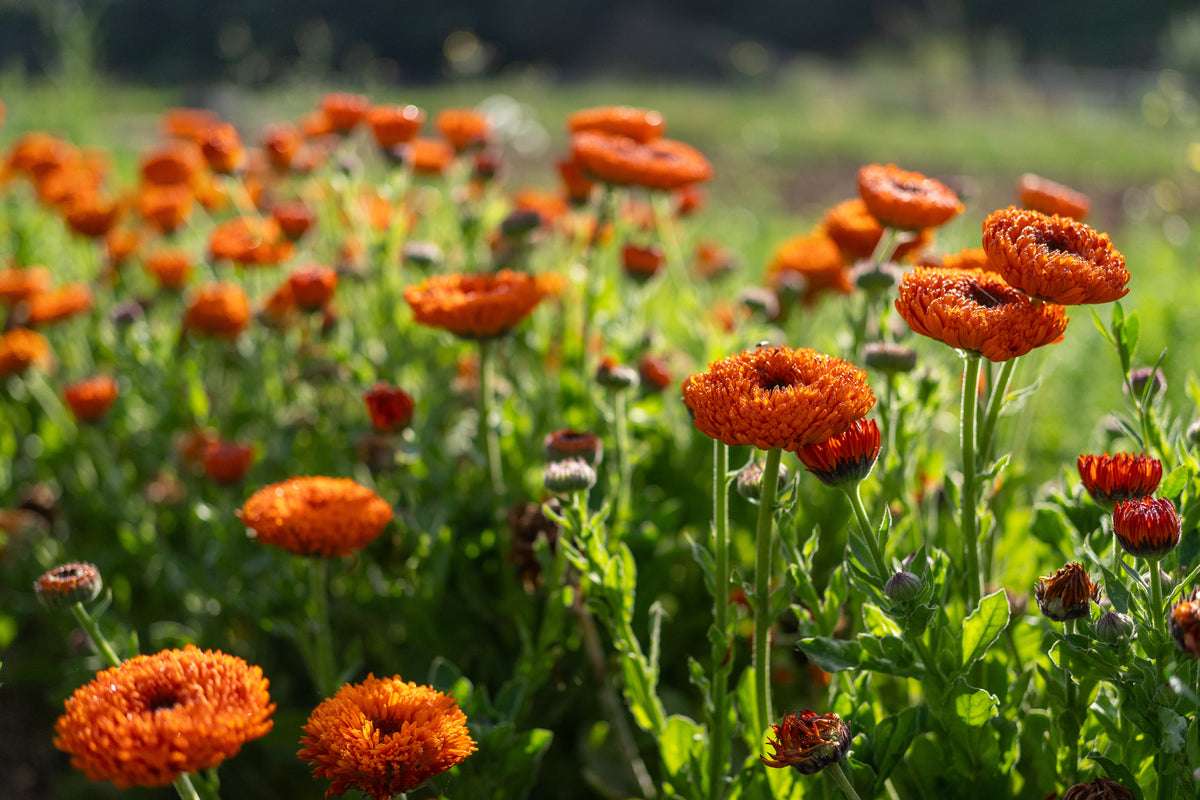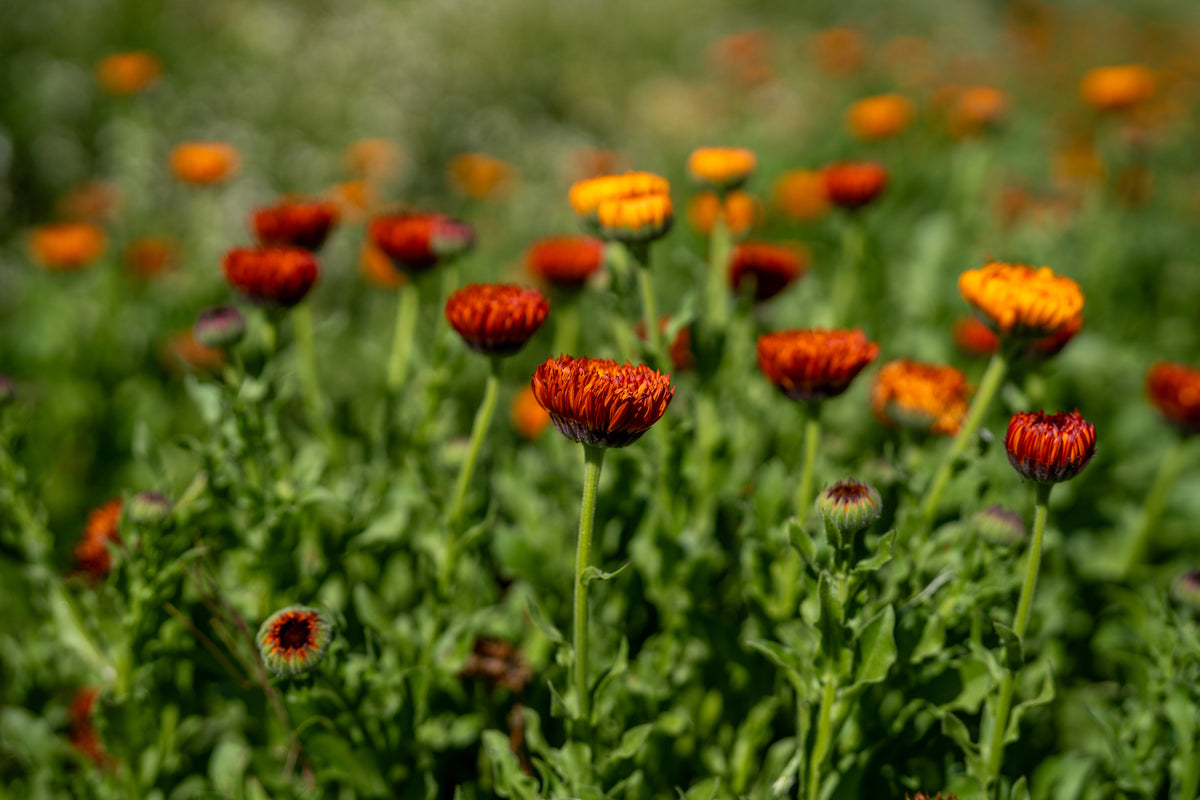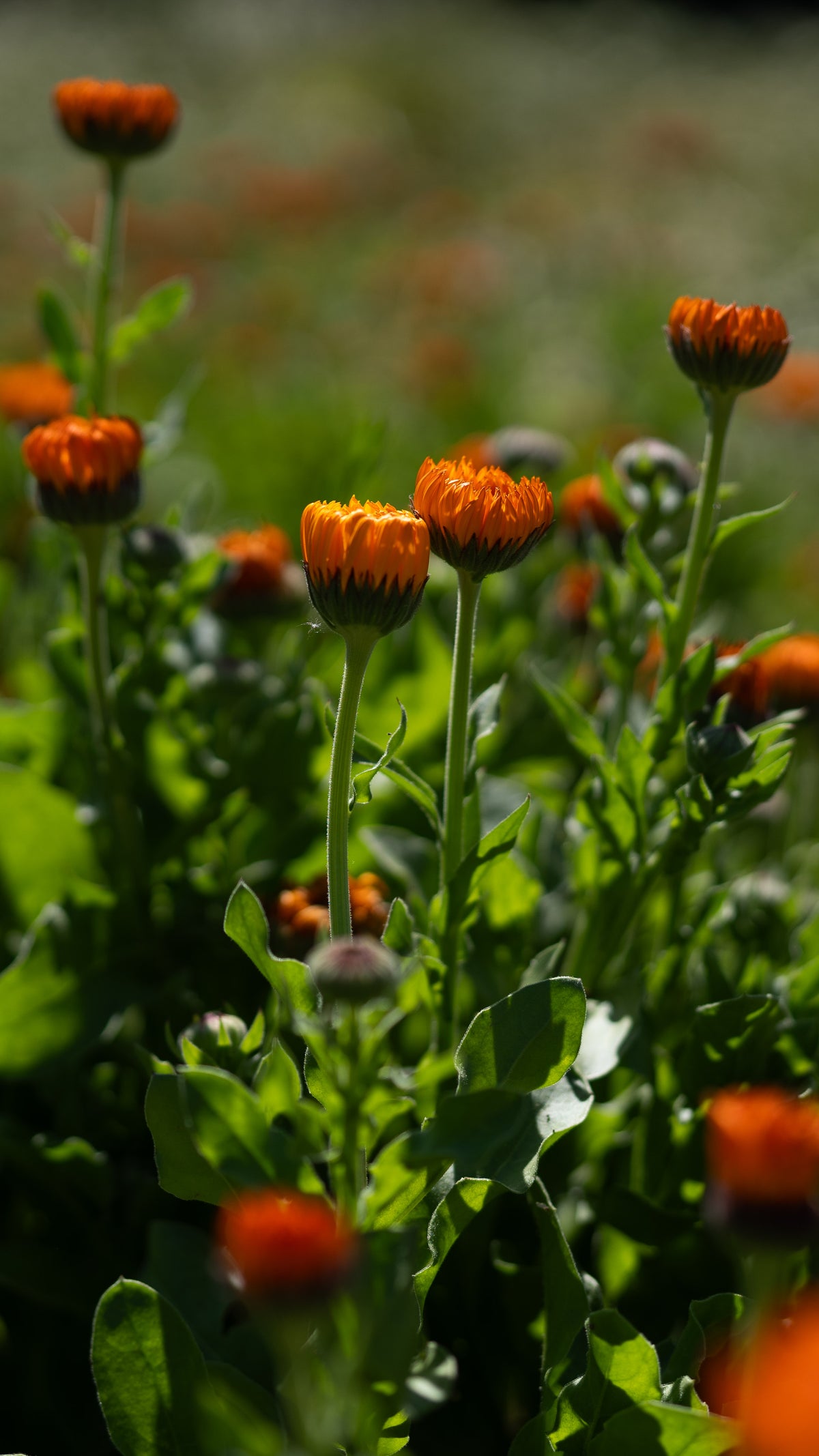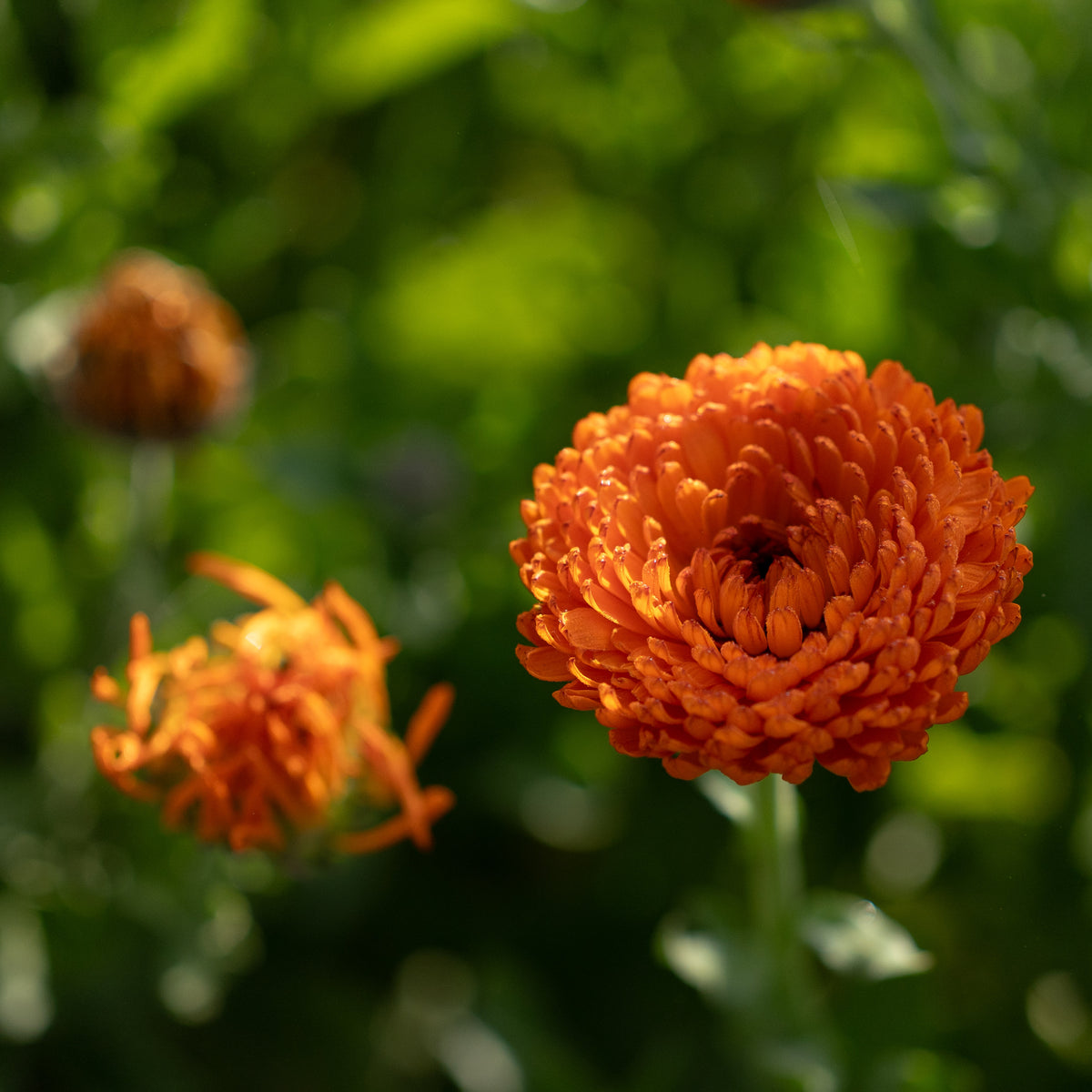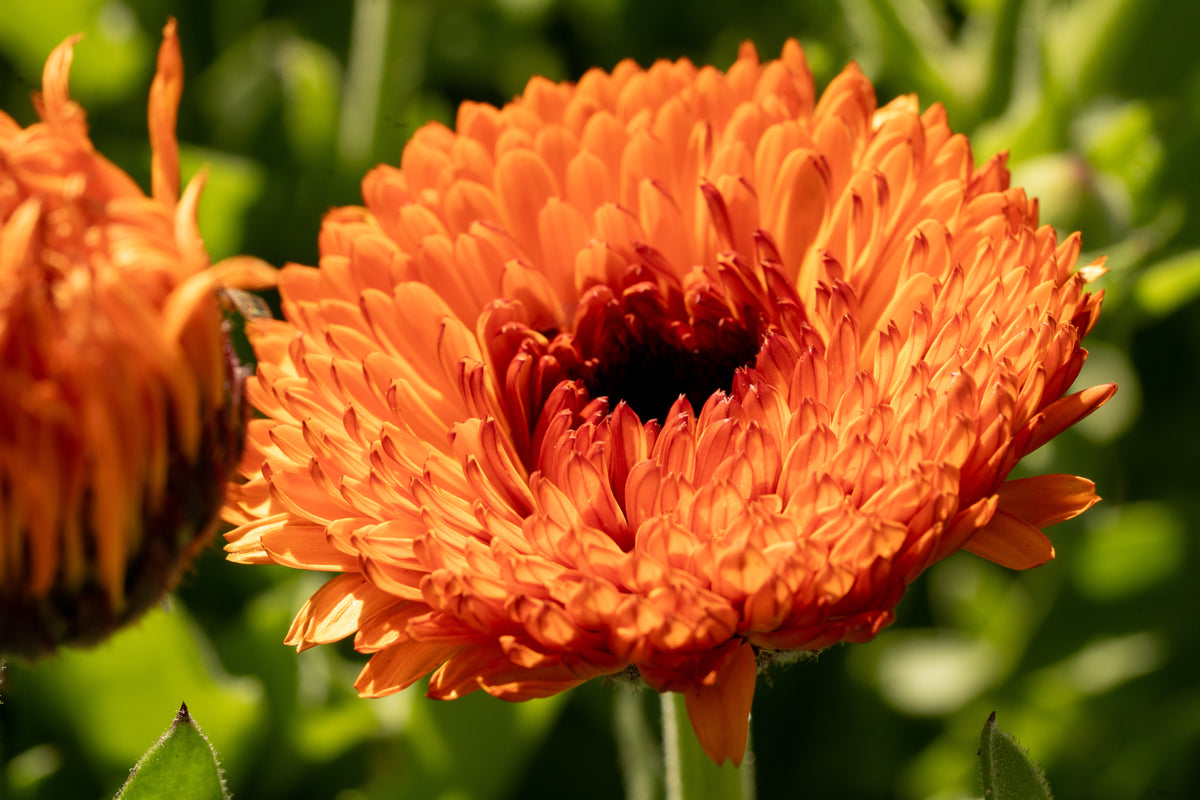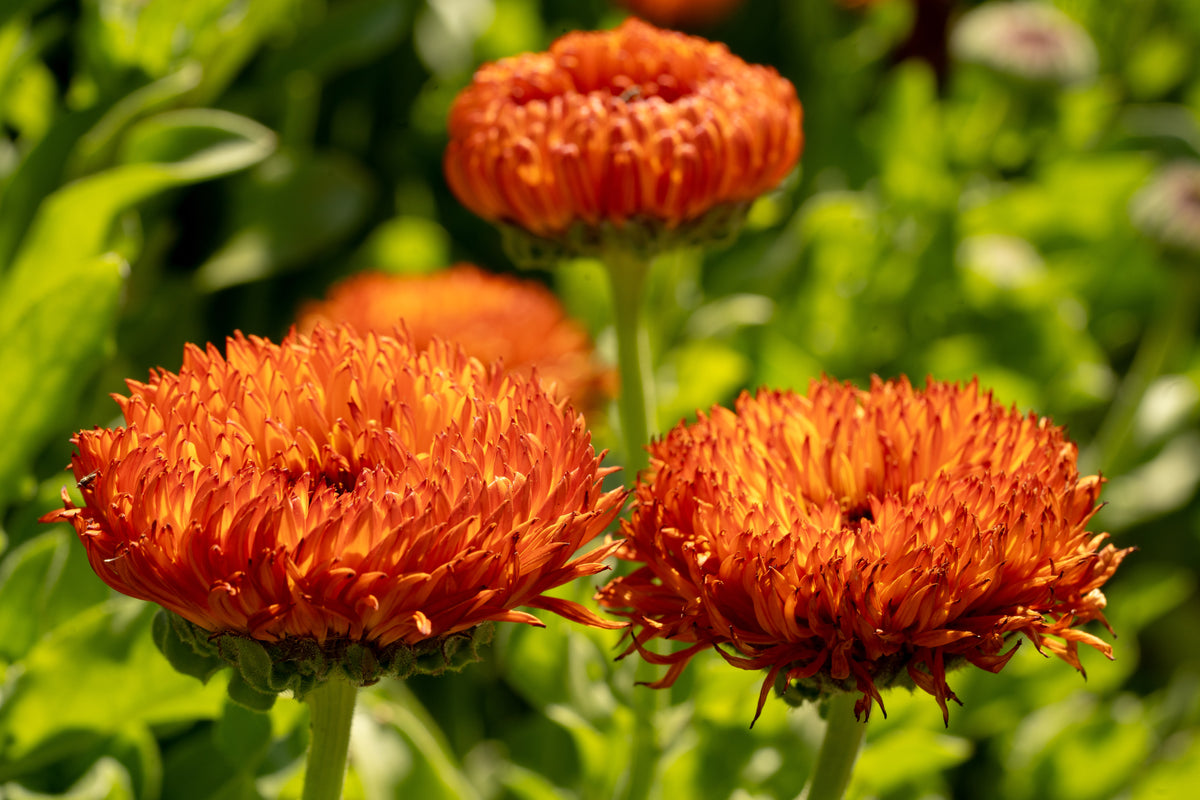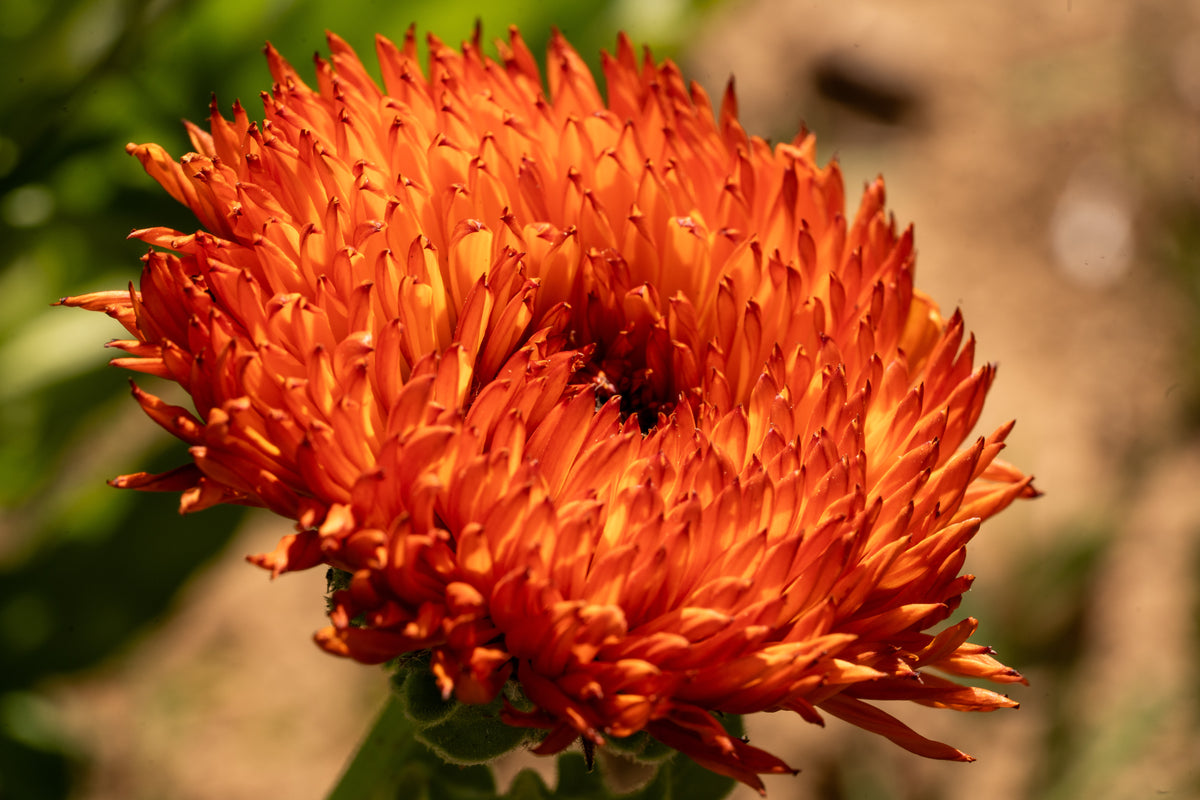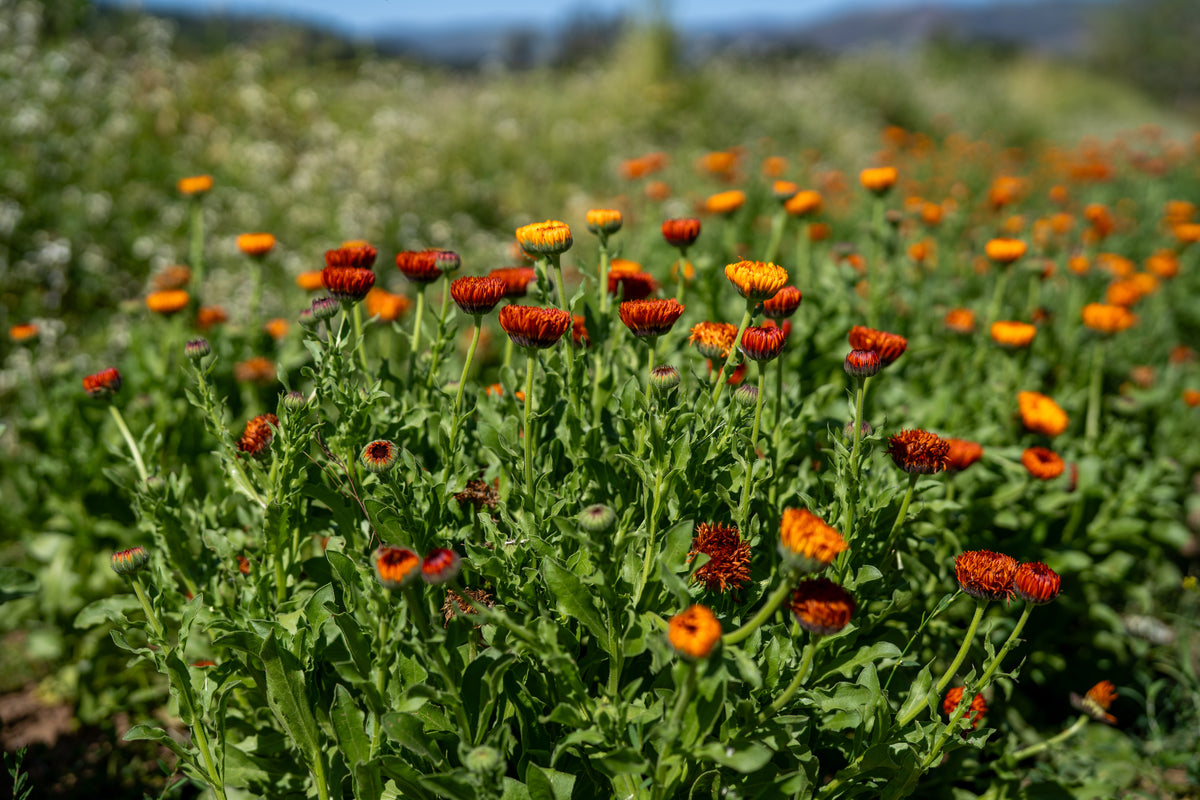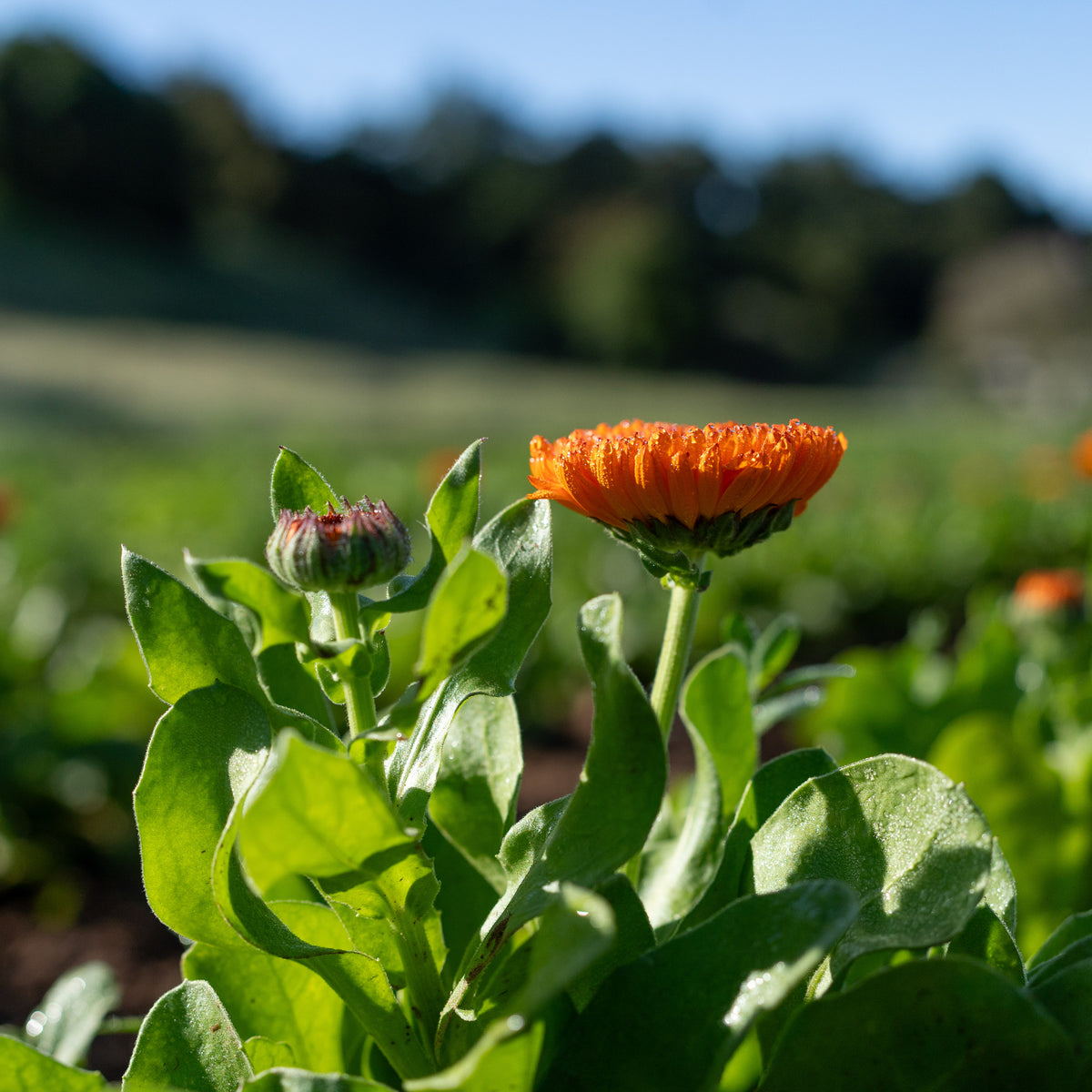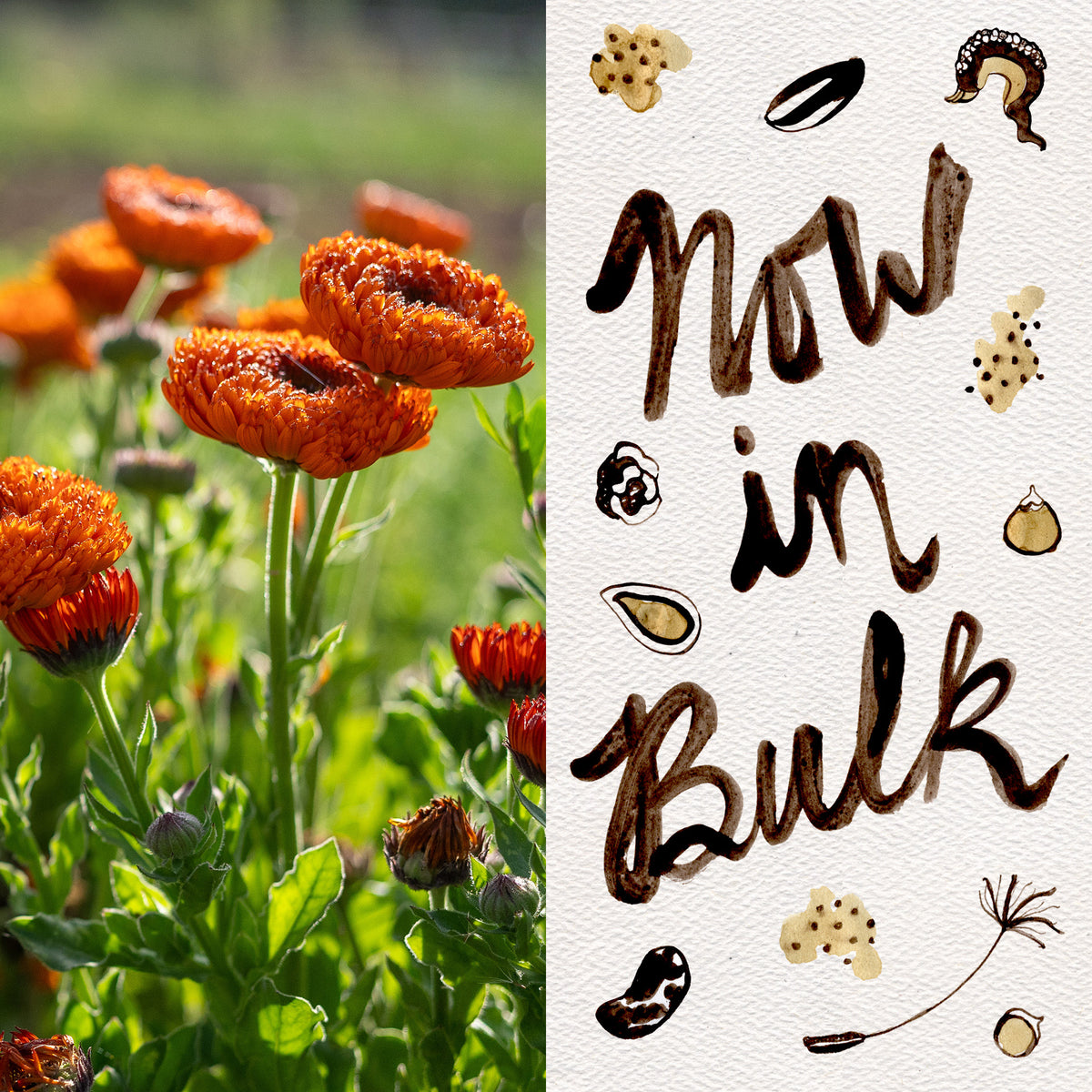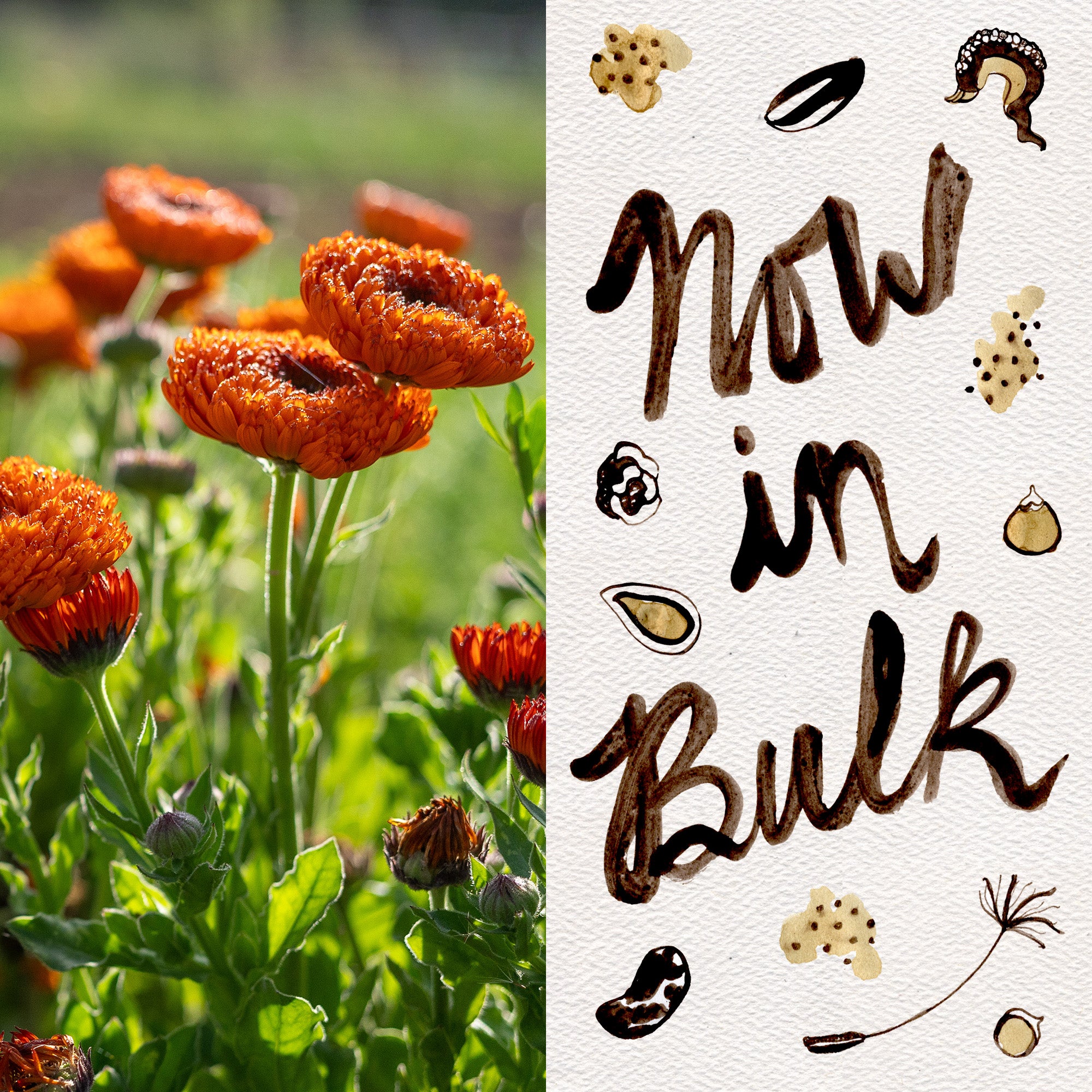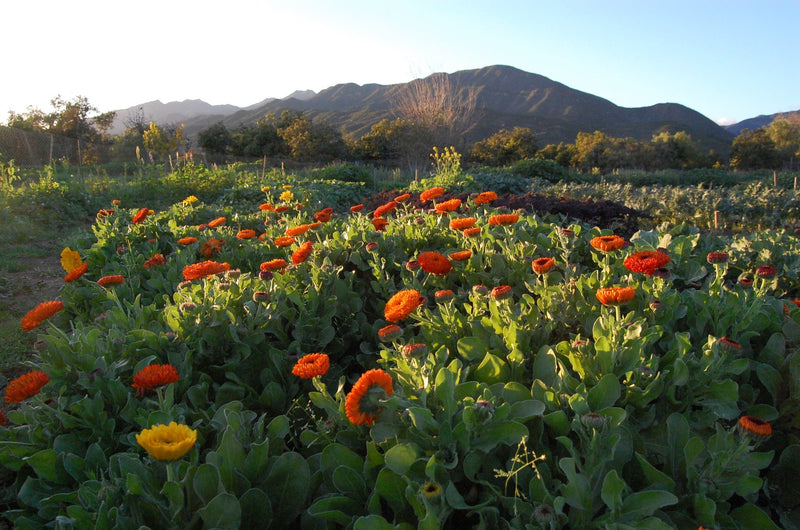How To Grow Calendula From Seed to Harvest As Well As Seed Saving Advice and Remarks on its Medicinality and Variety Selections
 Calendula is known as “flower of the sun” or “ herb of the sun,” in reference to the plants blossoming in the morning and shriveling in the evening. Calendulas are indigenous to Europe, West Himalaya, Macaronesia, the Mediterranean to Sahara, and the Arabian Peninsula (Kew Science). Usage of “calendula” as a descriptor for the scientific genus is a recent historical development, its earliest can be traced back to 1871. The etymology of the word “calendula” refers to its cyclical blossoming pattern; calendula is derived from the Latin calendae, intended to express “little calendar, little clock, or perhaps little weather-glass.” (Oxford English Dictionary). Other prominent names for calendula have included Pot Marigold, English Marigold, Holigold, Mary Bud/Marybud, or Mary Gowles, and Queen of the Sun.
Calendula is known as “flower of the sun” or “ herb of the sun,” in reference to the plants blossoming in the morning and shriveling in the evening. Calendulas are indigenous to Europe, West Himalaya, Macaronesia, the Mediterranean to Sahara, and the Arabian Peninsula (Kew Science). Usage of “calendula” as a descriptor for the scientific genus is a recent historical development, its earliest can be traced back to 1871. The etymology of the word “calendula” refers to its cyclical blossoming pattern; calendula is derived from the Latin calendae, intended to express “little calendar, little clock, or perhaps little weather-glass.” (Oxford English Dictionary). Other prominent names for calendula have included Pot Marigold, English Marigold, Holigold, Mary Bud/Marybud, or Mary Gowles, and Queen of the Sun.
Calendula officinalis has a multitude of edible, medicinal, and cosmetic uses, including as a natural dye. The seeds also produce oil. Calendula blossoms attract a host of pollinator insects such as bees, hoverflies, bombyliid flies, beetles, butterflies and moths, solitary bees and halictids (sweat bees).
Cultivation
Starting calendula from seed is simple. The seeds have a striking appearance that resemble sea horses and are quite varied in size. We’ve separated seed harvests between large and small sizes, and found both to be equally viable in laboratory germination testing. The seeds are composed of a pericarp (seed hull) and a small kernel inside, which is the true seed.
Calendula seeds can be sown in a myriad of ways: directly in the soil outdoors, broadcast by hand onto the ground prior to rains, or in seedling cells and then later transplanted. Calendulas are also great plants to grow in containers or other constrained growing areas (raised beds, planters, etc).

Plants will grow in either full or partial sun, in rich or poor soils, and have low fertility and moderate water requirements. Any garden fertilizer for vegetables or a standard watering routine is sufficient to ensure vigorous and productive growth. You can grow a low maintenance pollinator crop or be more actively engaged for specific culinary or medicinal uses. Flexibility is the theme.
Water seeds consistently to ensure germination and regularly once seedlings begin to grow. Do note that emerging seeds can be munched on by birds, younger more succulent plants can be a feast for ground squirrels, and gophers are always a looming underground threat. However, as plants mature and flower, they become pretty resistant to pests and predators.
Calendula is generally considered an annual, but can be biennial or perennial depending on climate. It tolerates light frosts and can be grown year round in cold hardiness zones 9b (25 to 30F) and above. While calendula is easily established late spring through early summer, I prefer late summer sowings. I’ve found winter calendula blossoms to be larger and more resinous than spring-sown crops and a visually uplifting sight during short days and dark cold nights.
Seed Saving
 Saving seed from calendula is approachable because of the seed’s visually compelling appearance. Plants will re-seed themselves without intervention, as mature seeds simply fall to the ground. However, if you want to gather a seed crop for storage and future planting, scoop dried seed heads off the plants by hand, and try to minimize the amount of calyx (or non seed material) you gather. This makes fine cleaning the seed easier. For larger seed harvests we’ve tipped dried plants onto a canvas tarp and gently crushed them to release a large quantity of the seed, before using mesh screens and a box fan to remove any additional chaff.
Saving seed from calendula is approachable because of the seed’s visually compelling appearance. Plants will re-seed themselves without intervention, as mature seeds simply fall to the ground. However, if you want to gather a seed crop for storage and future planting, scoop dried seed heads off the plants by hand, and try to minimize the amount of calyx (or non seed material) you gather. This makes fine cleaning the seed easier. For larger seed harvests we’ve tipped dried plants onto a canvas tarp and gently crushed them to release a large quantity of the seed, before using mesh screens and a box fan to remove any additional chaff.
Calendula is a self pollinating plant, but will also outcross from insects. Color selections of the flowers can be made by isolating plants or bagging blossoms to prevent insect cross pollination and saving seeds.
Uses
Calendula is such a prevalent garden staple that it’s easy to miss its treasure trove of uses, culinary, ecological, and medicinal.
Calendula leaves can be used as a vegetable, but the flowers are the most commonly used part of the plant, most immediately as a tea or fresh in salads. The dried flowers can also be used as a substitute for saffron in baking and cooking.
The entire plant, but especially the flower heads, have a mild, pleasant sweet smell and exude a sticky, oily, “resin” that is responsible for many of the plant’s medicinal properties, which is extensively documented in the scientific literature. A pair of peer-reviewed papers: “An Updated Review on the Multifaceted Therapeutic Potential of Calendula officinalis L.” and “Pot Marigold (Calendula Officinalis L.) – A Position In Classical Phytotherapy And Newly Documented Activities” provide an introduction to calendula’s multivarious pharmacological properties:
- Anti-inflammatory activity: Reduces swelling, redness, and irritation.
- Wound healing acceleration activity: Speeds up how fast a wound closes and tissue repairs.
- Antibacterial activity: Kills or slows down harmful bacteria.
- Antifungal activity: Prevents or treats fungal infections.
- Antiviral activity: Inhibits viruses from replicating.
- Antitrichomonal activity: Kills or inhibits Trichomonas vaginalis, a protozoan parasite that causes trichomoniasis (a sexually transmitted infection).
- Antioxidant activity: Protects cells from damage caused by free radicals.
- Skin brightening effect: Evens out skin tone and reduces dark spots.
- Spasmolytic activity: Relieves muscle spasms or cramps.
- Antidiabetic and hypolipemic activity: Helps lower blood sugar and/or cholesterol levels.
- Hepatoprotective and hepatoregenerative activity: Protects the liver from toxins and helps it repair itself.
- Pancreas regenerating activity: Helps regenerate damaged pancreatic tissue, particularly insulin-producing cells.
- Cardioprotective activity: Protects the heart from damage or stress.
- Neuroprotective activity: Protects brain cells from degeneration or injury.
- Antitumor activity: Inhibits the growth or spread of tumors.
- Immunostimulatory activity: Stimulates or supports the immune system’s function.
This second paper also notes that the milk present in calendula flowers may be formed by lactose / milk sugar, which is a huge rarity in the plant world!
Common at home medicinal uses for calendula are balms, skin salves, tinctures, or as an infused oil made from fresh or dried blossoms.
Calendula and Plant Good Seed
Calendula holds a notable place in seed company lore. The Neon variety we carry in our catalog was the first flower we planted on our farm and amongst the first seed varieties we released. I’ve done multiple selections of the Resina strain to maintain its mid-sized yellow on yellow ray and disk florets.
Resina has been said to contain “the highest concentration of resins prized by herbalists,” a claim unsupported by either anecdotal or peer reviewed research. This claim has been circulating online long enough to have become a de facto truth ( along with SEO product optimization across multiple seed company listings). Two papers - "Phenotypic Diversity In Calendula Officinalis L. Regarding Plant Growth, Photosynthetic Traits, Flower Yield, and Oil Content" and "Exploring the phenotypic and molecular diversity of Calendula officinalis L. cultivars featuring varying flower types" explore the subject of breeding the plants for maximal “triterpenoid-rich glandular exudate” (aka resin). The authors of the latter paper note, “The most desirable varieties for the pharmaceutical industry are forms with numerous inflorescences, an intense orange colour, and the predominance of ligular flowers.” Another takeaway from these papers is that the best strains for medicine seem to be entirely European; this is unsurprising, given the plant's native origins. Nonetheless I’d consider any of the strains we carry to be eminently practical for medicinal use, so it’s really up to your personal / aesthetic preference in terms of which variety to choose. Lemon Sorbet is a strain I have selected and reselected over the years, and is the one I've recently renewed a connection with. We’ve always carried a mixed color blend; past varieties have included Rainbow, Sherbet, and currently Kablouna. There are many other species of calendula as well. We are currently in the process of resurrecting Calendula arvensis or Wild Calendula that has long been out of our catalog.
Other varieties we have previously carried include Triangle Flashback, and a Finnish blend seed I gathered from city gardens in Tampere and Helsinki.
 In 2013 illustrator Goda created a short run poster to celebrate the release of the Finnish strain, emulating our English packet design at the time. Perhaps it’s time to resurrect that strain…
In 2013 illustrator Goda created a short run poster to celebrate the release of the Finnish strain, emulating our English packet design at the time. Perhaps it’s time to resurrect that strain…
![]() All images and written content were created by real humans without any use of generative AI.
All images and written content were created by real humans without any use of generative AI.

